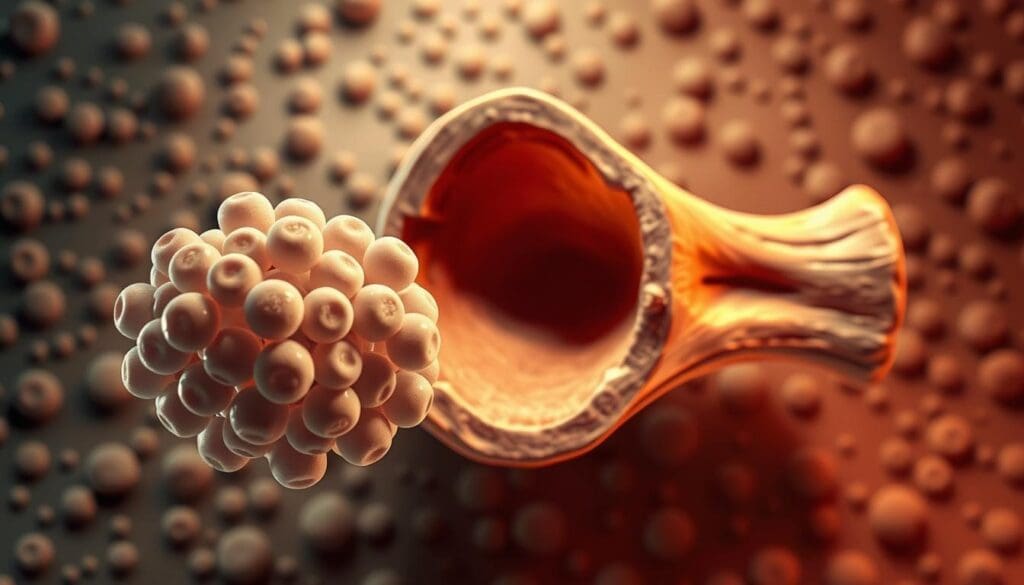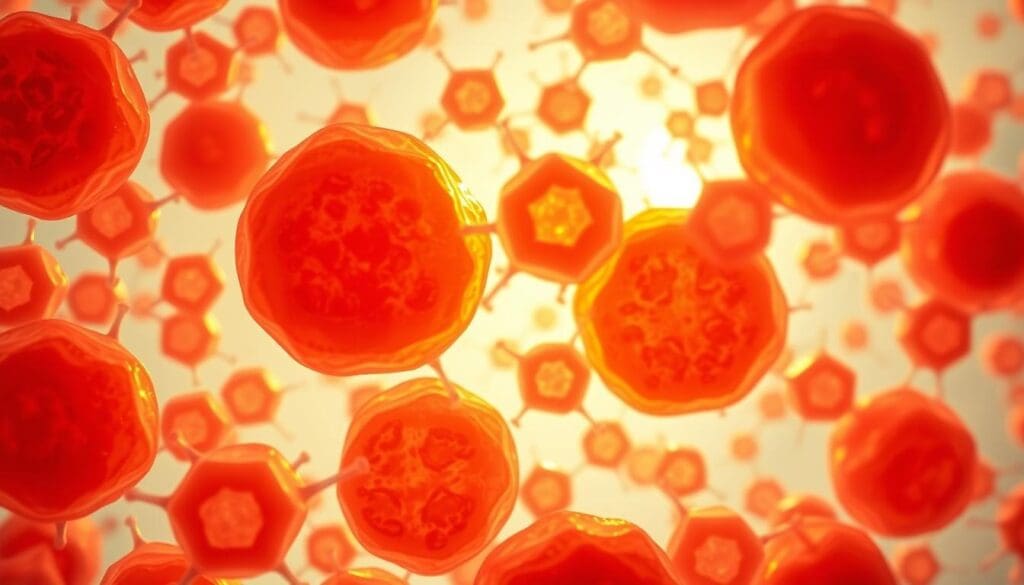Last Updated on November 14, 2025 by Ugurkan Demir

Blood cancer ALL leukemia grows quickly in the bone marrow and affects immature lymphocytes, a type of white blood cell. It’s important to understand its unique traits and how it differs from other blood cancers.
At Liv Hospital, we focus on giving patients and their families compassionate, expert care tailored to their specific needs. Our advanced treatment plans for blood cancer ALL leukemia ensure patients receive top-quality, evidence-based care.
Understanding how blood cancer ALL leukemia develops is key to effective treatment and better patient outcomes. We’re dedicated to offering world-class healthcare with full support and guidance throughout the journey.
It’s key for patients and doctors to understand Acute Lymphoblastic Leukemia (ALL). This helps in diagnosing and treating it well. We know how complex ALL is and how important it is to guide patients with care and clarity.
ALL is a fast-moving cancer that affects the blood and bone marrow. It starts with a change in the bone marrow’s stem cells. This leads to the creation of abnormal white blood cells called lymphoblasts or leukemic cells.
ALL progresses quickly if not treated fast. It causes lymphoblasts to grow uncontrollably. This can lead to anemia, infections, and bleeding problems.

The terms “lymphoblastic” and “lymphocytic” leukemia are used for ALL. But they mean different things. “Lymphoblastic” points to the cancer’s origin from immature lymphoblasts.
ALL is split into types like B-cell ALL or T-cell ALL. Knowing the type helps doctors predict the outcome and choose the right treatment.
| Subtype | Characteristics | Prognosis |
| B-cell ALL | Affects B-cell lymphocytes | Generally has a better prognosis with modern treatments |
| T-cell ALL | Affects T-cell lymphocytes | Historically had a poorer prognosis, but outcomes have improved with intensive therapy |
We stick to internationally benchmarked protocols. This ensures our patients get the best care for their ALL subtype.
Acute Lymphoblastic Leukemia (ALL) is a fast-growing cancer of the bone marrow. It’s different from other blood cancers because it affects lymphocytes in a unique way. Knowing how ALL works is key to finding the right treatment.
ALL causes immature lymphocytes to grow out of control. These cells are important for our immune system. But in ALL, they don’t mature right and fill up the bone marrow.
This blocks the production of normal blood cells. It can cause anemia, infections, and bleeding problems.

ALL is divided into B-cell ALL and T-cell ALL based on the lymphocyte type. B-cell ALL is more common, mainly in kids, and usually has a better outlook. T-cell ALL is less common but often affects teens and young adults.
Knowing if it’s B-cell or T-cell ALL helps doctors choose the best treatment. We offer compassionate, expert care for all types of ALL, customizing treatment for each patient.
| Characteristics | B-cell ALL | T-cell ALL |
| Prevalence | More common, mainly in children | Less common, more often in teens and young adults |
| Prognosis | Generally better prognosis | Generally poorer prognosis compared to B-cell ALL |
| Treatment Approach | Often involves chemotherapy and targeted therapy | May require more intensive chemotherapy and sometimes stem cell transplantation |
Understanding ALL’s biology is vital for effective treatment. At our institution, we focus on compassionate, expert care for ALL patients. We use the latest treatments to help improve their chances of recovery.
It’s vital to spot the early signs of Acute Lymphoblastic Leukemia (ALL) for quick diagnosis and treatment. The symptoms can be tricky to identify because they’re similar to other health issues. This makes it hard to catch ALL early.
Fatigue is a key symptom of ALL, often feeling like you’re too tired to rest. This happens because of anemia, a lack of healthy red blood cells. You might also notice unexplained bruising or bleeding, caused by low platelet counts.
Common symptoms include:
ALL can weaken your immune system, making you more prone to infections. You might also notice swollen lymph nodes, spleen, or liver as the disease advances.
“Early detection of ALL is critical to improving treatment outcomes. Recognizing the symptoms early can significantly impact the effectiveness of the treatment plan.” – Medical Expert
Other signs of ALL include bone and joint pain, shortness of breath, and sometimes a rash or skin issues. As ALL gets worse, it can lead to pancytopenia, a condition with low counts of all blood cell types.
| Symptom | Cause |
| Fatigue | Anemia due to low red blood cell count |
| Unexplained Bruising | Thrombocytopenia (low platelet count) |
| Frequent Infections | Neutropenia (low white blood cell count) |
It’s key to know how ALL differs in kids and adults for better care. Acute Lymphoblastic Leukemia (ALL) shows up in different ways in different ages. This affects how we treat it and how well patients do.
ALL hits kids more than adults. It’s the top cancer in kids, making up a big part of childhood cancer cases. Most cases happen when kids are 2 to 5 years old.
Why is ALL more common in children? Scientists are trying to figure this out. But they think genes play a big part. Kids with Down syndrome, for example, are at higher risk.
How well kids and adults do with ALL is very different. Kids have a better chance of being cured than adults. Thanks to better treatments, survival rates have gone up a lot.
| Age Group | 5-Year Survival Rate |
| Children (0-14 years) | 90% |
| Adolescents and Young Adults (15-39 years) | 65-70% |
| Adults (40+ years) | 40-50% |
Healthcare institutions like Liv Hospital lead in treating ALL. They know the disease well and customize care for each patient.
Healthcare teams can give better care by understanding its complexities. Knowing how ALL affects different ages helps them treat patients more effectively. This leads to better results for patients.
It’s important to know how ALL is different from other blood cancers. This knowledge helps doctors diagnose and treat patients better. ALL makes up about 2% of all lymphoid neoplasms in the US. It’s different from AML, another type of acute blood cancer.
Acute leukemia includes both ALL and AML. The main difference is whether it affects lymphocytes or myeloid cells. This difference affects how the cancer is treated and the patient’s outlook.
ALL and AML are both aggressive leukemias. But they target different blood cells. ALL attacks lymphocytes, key to our immune system. AML goes after myeloid cells, which make various blood cells.
Knowing the difference between ALL and AML is key for the right treatment
ALL vs. Other Lymphoid Neoplasms
ALL is a type of lymphoid neoplasm, which includes cancers from lymphocytes. Other cancers, like lymphomas and multiple myeloma, are also part of this group. Even though they share some traits with ALL, they need different treatments.
Medical care facilities like Liv Hospital use global standards to treat ALL. This ensures patients get the best care available.
Acute lymphoblastic leukemia (ALL) and chronic leukemias like Chronic Lymphocytic Leukemia (CLL) and Chronic Myeloid Leukemia (CML) have different traits and treatment paths. Knowing these differences is key for getting compassionate, expert care tailored to every individual’s needs. We will look at the differences between these conditions and how they affect treatment choices.
ALL is a fast-moving disease that needs quick action. On the other hand, CLL and CML grow slowly. This difference in speed changes the treatment’s urgency and type.
ALL treatment is tough and often includes chemotherapy, targeted therapy, or a bone marrow transplant. CLL and CML treatments might include waiting and watching, chemotherapy, targeted therapy, or immunotherapy. This depends on the disease stage and the patient’s health.
Here’s a comparison of key features of ALL, CLL, and CML:
| Disease | Nature | Typical Treatment |
| ALL | Aggressive, fast-progressing | Intensive chemotherapy, targeted therapy, bone marrow transplant |
| CLL | Indolent, slow-progressing | Watchful waiting, chemotherapy, targeted therapy, immunotherapy |
| CML | Indolent, slow-progressing | Targeted therapy, chemotherapy, bone marrow transplant |
In conclusion, knowing the differences between acute and chronic leukemias is essential for proper treatment planning.
Conclusion: Advances in ALL Treatment and Care
Understanding Acute Lymphoblastic Leukemia (ALL) is key to effective treatment. At Liv Hospital, we’ve seen big improvements in ALL treatment. This has led to better results for our patients.
Remission times for adults have greatly increased over 30 years. Treatment often cures ALL, even more so in children. Our well trained personnel mixes the latest medical knowledge with caring support.
This approach has greatly improved patient results. As we learn more about ALL, we can create treatments that meet each patient’s needs. We help our patients face their treatment journey with confidence.
Acute Lymphoblastic Leukemia (ALL) is a fast-progressing blood cancer. It affects immature lymphocytes, a key part of the immune system.
How does ALL differ from other blood cancers?
ALL is different from other blood cancers like AML and CLL. It grows fast and targets specific cells.
What are the symptoms of ALL?
Symptoms of ALL include fatigue, bruising, frequent infections, and swollen lymph nodes. Catching these symptoms early is key.
How is ALL classified?
ALL is divided into B-cell and T-cell types based on the lymphocytes affected. This affects treatment choices.
Is ALL more common in children or adults?
ALL is more common in children but can also affect adults. Children generally have a better prognosis.
What is the difference between “lymphoblastic” and “lymphocytic” leukemia?
“Lymphoblastic” and “lymphocytic” refer to the stage of lymphocyte development. “Lymphoblastic” involves immature cells, typical of ALL. “Lymphocytic” refers to more mature cells, often seen in CLL. Knowing these differences is key for proper diagnosis and treatment.
ALL treatment is unique due to its fast progression and specific cell types.
What are the major differences between acute and chronic leukemias?
Acute leukemias, like ALL, progress quickly and need immediate treatment. Chronic leukemias, such as CLL and CML, grow more slowly.
Subscribe to our e-newsletter to stay informed about the latest innovations in the world of health and exclusive offers!